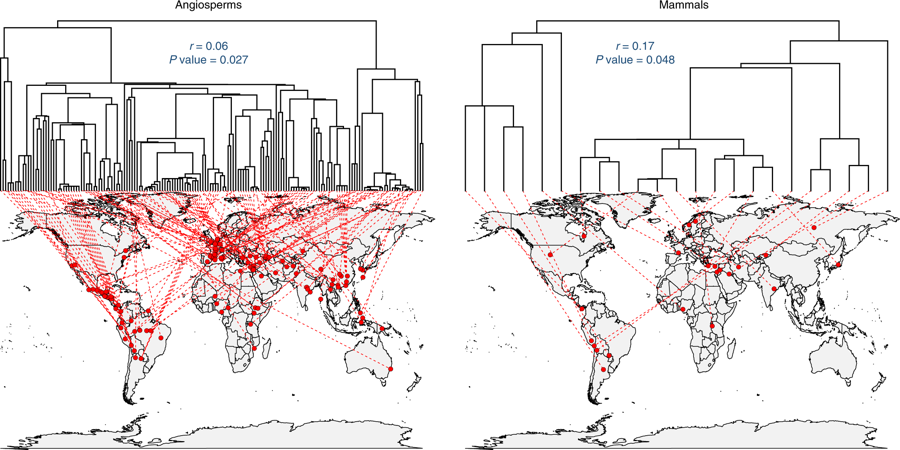In the pursuit of the biological traits of food species
- D-USYS
- Institute of Integrative Biology
Researchers from 19 institutions, including Julia Chacón-Labella, postdoc at the Institute for Integrative Biology (IBZ) at ETH Zurich have analyzed the biological traits and evolutionary placement of a set of more than 1000 domesticated species around the world. This work provides the scientific community with a detailed database which will permit to address new questions.
The species of plants and animals that we use for food provision, such as wheat or sheep, were formerly wild species, which underwent domestication since the late Paleolithic (between 12.000 and 10.000 BC). A group of researchers led by Rubén Milla from Rey Juan Carlos University in Móstoles, Spain, have united efforts to build a global database on the evolution and biological traits of more than 1000 food species. «First, we asked if plant and animal domesticates belong to a few or to many evolutionary lineages», explains Chacón-Labella, who is currently a postdoc fellow at the Instituto Nacional de Investigación y Tecnología Agraria y Alimentaria (INIA) in Madrid. A second question was if the domesticates share biological characteristics with their wild relatives and how.
Food species in the tree of life
The main finding of the study is that the traits of domesticated species are a subgroup of those we find in wild species. For instances, even if agricultural species tend to yield big seeds, or livestock species tend to be large in size, those traits can also be found among wild species. An additional contribution of the study is the finding that food plants come from very diverse evolutionary origins, whereas livestock animals belong to a few lineages. «We are used to think on the main agricultural crops belonging to just a few botanical families, such as the legumes or the grasses, but we can find food plants in many other evolutionary lineages of plants», says Chacón-Labella. According to the scientist, the study will provide the scientific community with a valuable database on food species and on their wild relatives which will ease future research in this area.
